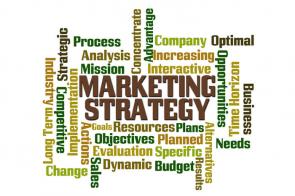Leaving Employees to Self-Management
Traditionally, both employers and employees have developed stereotypes in different cultures and both employers as well as employees enter a workplace with those stereotypes set in their minds. Employers often use excessive and negative means to 'control' employees forgetting that they are buying service and not people, and employees who suffer learn to put all employers in the same cast. On the other hand employers are let down by negligent employees, procrastinating people with poor work culture, and some who do not keep trust or faith. Consequently, employers who have so suffered, see employees with suspicion and try to micromanage affairs. However, holding on to stereotypes is wrong since every individual is different and so is every employer as well as employee.
The Art of Leadership
The art of leadership is sought by virtually everyone. It is claimed by many, defined by a few, and exercised by the unheralded, depending on the source you use. In fact, we know a lot about leadership; it is the application of leadership that creates confusion for most.
Communicating Across a Worldwide Workforce
‘Globalization’ is no more a jargon but an ordinary part of everyday life. Business leaders have learned long that the problem is not in ‘globalization’ or in ‘diversity’ but in the lack of cross-cultural competencies in communication. Executives, managers, negotiators, business leaders, or decision makers of any and every level can create barriers and hamper the smooth flow of business with their personal incompetence in cross-cultural communication creating pockets of miscommunication or negativity. To handle a workforce spread worldwide, a leader needs the following characteristics:
Important Salary Negotiation Tips for Employers
When you start negotiating the package of a potential candidate, there are some things that you can be sure of, and there are some things you need to be sure about. These provide you the points of reference for negotiating the salary of a prospective employee.
GOALS - The Power Line to Success and Achievement
Goals give you direction in all areas of your life Personal, Career, Spiritual, Material, and Contribution. Goals give you a purpose in life. A reason to get up early in the morning and go to bed late at night. Goals will put drive and passion into your life. Not having goals is similar to sailing a ship across the Atlantic without a map. Goals, like maps, help you get to your destination much faster than sailing though life aimlessly.
The First Two Qualities of a True Business Leader
A leader is not just anyone who people follow, for people may follow a person for many reasons. In business, a leader is anyone who can think out and set goals that are attractive to both businesses and employees and also can attract and influence followers to share those goals. The old school leadership version of command and control is good in the military. In a business workplace where the business's ability to attract and retain talent, and consequently profit, depends upon humans possessing extensive freedom of choice, a leader requires entirely different attributes.
The Six Thinking Hats of Decision Making
Among the various learning and problem solving techniques espoused by Edward de Bono, including lateral thinking, DATT (Direct Attention Thinking Tools), CoRT thinking and Six Thinking Hats, STH has a special place for everyday problem solvers. Especially the ‘purple hat’ or the critical thinking hat is worn by managers. The purple hat essentially represents an attitude that says “That won’t work. We have never done that before. It is crazy and stupid.”
Leading the Strategic Changes
Implementing new strategies, new directions, new objectives, is introducing change, major change, into the organization. As such it is essential that the implementation is approached, managed, in a similar fashion to that adopted when major changes are being made. The implementation of the changes must be planned, implemented as smoothly as possible, and then be monitored and evaluated for progress and performance against the desired outcomes, objectives, that were the drivers of the change. The leader must ensure that all aspects of the changes, the new strategic plan, are managed successfully.
Problem Solving and Corrective Action
This article introduces the problem-solving model as a technique for managing performance issues that are more controversial, or that are not effectively addressed through coaching or feedback. Issues such as tardiness, being out of uniform, continual poor performance, and others are best handled by a direct, objective approach. By following the Problem Solving Dialogue Model taught in this article, you can feel confident in addressing these thorny issues with employees.
Three Critical Lessons in Performance Management
Where organizations are fully performance driven, managing ‘performance management’ is of the highest priority. Difficulties arise if executives in charge of drawing up and implementing performance management practices lack the required skills or outlooks for translating lessons learnt elsewhere on to the instant workplace and organization. Balanced performance appraisal is one of the keystones in designing performance management blueprints and another is the recognition that it’s ultimately the staff that runs the show when it comes to service delivery.
Attaining the Holy Grail of Realizing Company Mission and Vision
If you ever want to know whether the man appointed at the top is truly a CEO or just improvised COO material, ask him one question: What steps have you taken to translate the Company Vision into behavioral competencies and measurable events?
Social Validation Sells
For the most part, we are all conformists. We will do what the crowd does. We might not like to admit that, but it is true. Only 5 to 10 percent of the population engages in behavior contrary to the social norm.
The Dangers of Unquestioning Loyalty in Executing Company Policies
The first obstacle before a company management is in deciding when to take a decision. Policies drafted need to be implemented through strategies and effective execution of strategies need continual innovation on techniques so that strategies can meet the demands of policies. In this unchallenged chain of events, there lies one vital flaw, very often exploited at every level by procrastinators and incompetent administrators – unflinching loyalty to policies as an excuse to decide that no decision needs to be taken, even in the face of obvious needs. Typically, this approach is termed as ‘obliviousness’ to need issues.
You as THE Authority Figure
Ever ask yourself why so many giant corporations invest so much money in books, tapes, seminars and coaching to train their people in leadership? Obviously there are many more slots for leaders than there are people to fill them. It's also obvious those huge companies aren't waiting around for enough leaders to be born. They create their own supply.
Three Negative Outlooks and Workplace Performance
Feelings of negativity do not always end up in poor performance in the workplace unless you allow them to. Awareness of common types of negative emotions associated with the workplace, and knowledge of the channels through which they usually flow can help you control negative emotions and use their energy for superior performance. Interestingly, those in the normal workplace receive surrounding support that helps to buffer their negativity, but for those at the top, especially employers, it is only their personal awareness of situations that can save the day.
We Have to Talk: A Step-By-Step Checklist for Difficult Conversations
Think of a conversation you've been putting off. Got it? Great. Then let’s go.
There are dozens of books on the topic of difficult, crucial, challenging, important (you get the idea) conversations (I list several at the end of this article). Those times when you know you should talk to someone, but you don't. Maybe you've tried and it went badly. Or maybe you fear that talking will only make the situation worse. Still, there's a feeling of being stuck, and you'd like to free up that stuck energy for more useful purposes.
Change Management: Dynamic Resource Optimization
Whether you decide to manage change or change managers, letting resource optimization off from your sight for a single instance can cause hurt.
Mentoring and Coaching for Professionals
In recent years there has been a significant rise in the demand for mentors and coaches. The driving forces behind this are: executives, managers and other specialists are increasingly expected to demonstrate that they are undertaking significant professional development; the workplace and business employment environment is becoming even more competitive; the influence of the emerging industrial nations is forcing radical changes in the skill mix required of managers and other professionals in the developed countries; the diversity of personal and professional skills, knowledge, and expertise needed to be successful in today’s global business environment. As this demand has increased, so has the diversity of roles played and the range of services offered. Indeed, there are so many variations and combinations of mentoring and coaching, that it is increasingly difficult to differentiate between them and almost impossible to categorise the variations available.
Change Management in Face of Globalization
Globalization of a company brings its own set of benefits and costs. Often the costs include the consequences of unmanaged global expansion without considering the stakes and concerns of the workforce and infrastructure that is already there, the one that enabled the company to think global in the first instance. This article deals with the aspects of globalizing, outsourcing, and expanding the operations of a service based company.
Journey to the Top
People get motivated by different things and for different reasons to get to the top. For some, it could be the job title, the car, social status, an improved standard of living or even a fat pay check. While for others it could be the challenge in itself, or an opportunity to learn and grow or an opportunity to make a difference. Whatever your motivation, always remain motivated, particularly in crunch moments, along your journey to the top!













